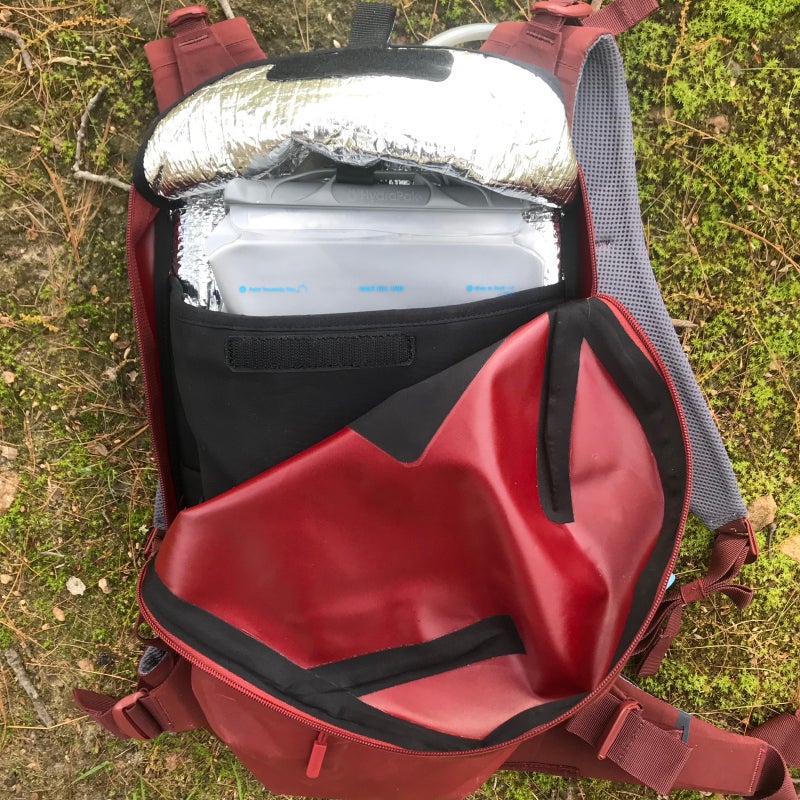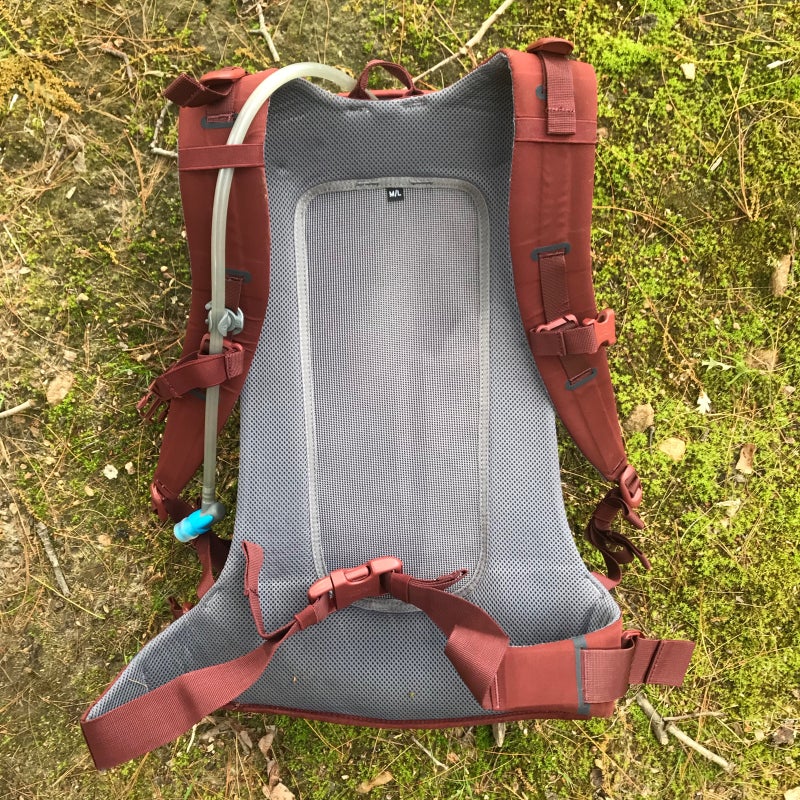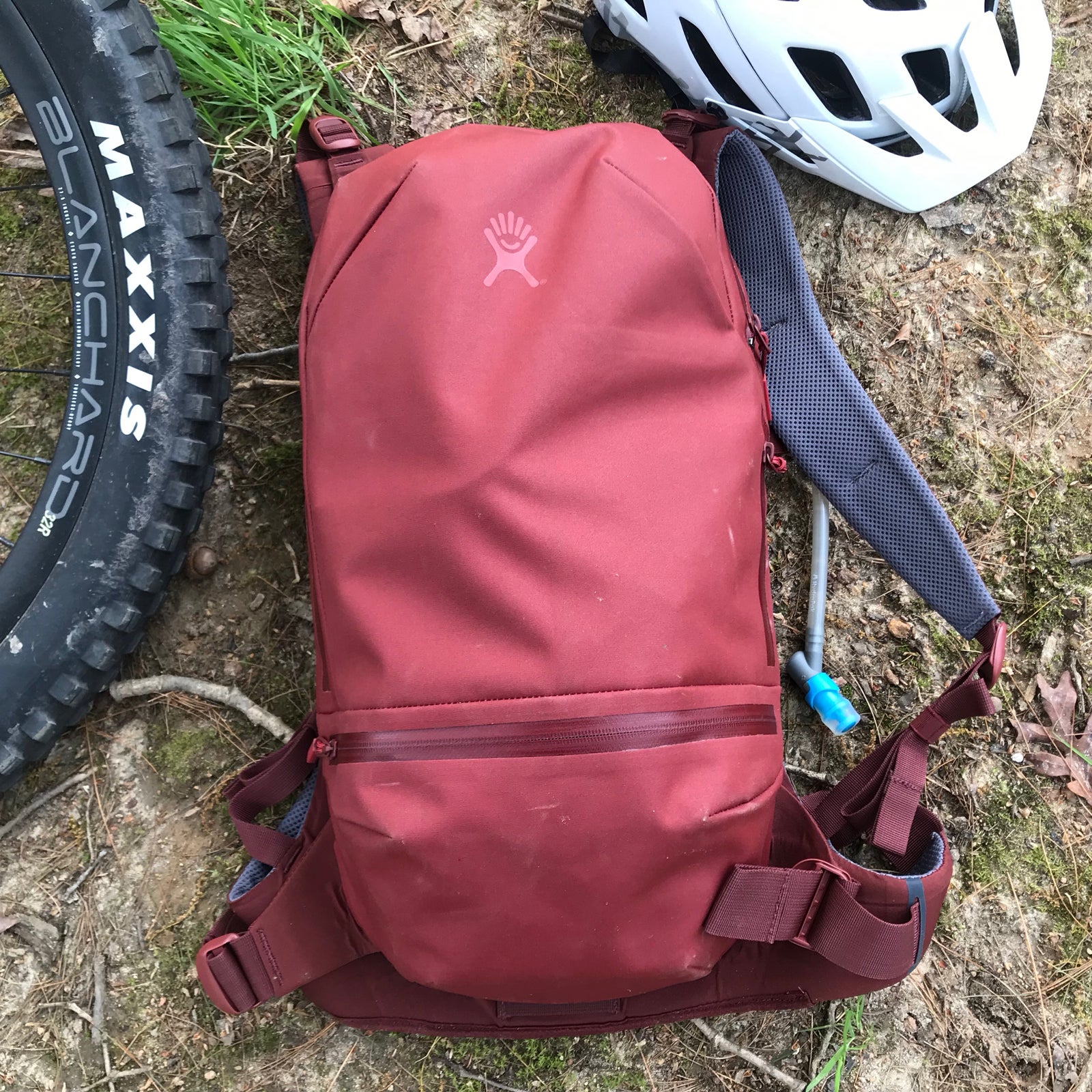I still remember when I bought my first hydration pack. It was school bus yellow (because all gear in the early ’90s was school bus yellow), and the whole concept of putting a bladder of water inside my backpack was a game changer. Twenty-five or so years after I bought that yellow pack, Hydro Flask added another twist to the hydration game with its new series of (10L, $165; 20L, $200), which have an insulation system designed to keep water cold for up to four hours.
Hydro Flask made a name for itself by producing stylish insulated mugs, bottles, and cups before expanding into soft goods, first with the introduction of soft-sided coolers, and now with this series of hydration packs made specifically for mountain biking that come in and options. Both packs feature a three-liter insulated bladder that slips inside a built-in neoprene sleeve lined with reflective material (think: emergency blankets). The whole system is designed to keep the cold in and the heat out.

I took the ten-liter Journey mountain biking during a series of 80-degree days in the southern Appalachians. It doesn’t have a lot of frills. The pack has a sleek, streamlined look—the sort of aesthetic you’d expect in an urban commuter pack: no lash points for extra gear, no helmet carry system, not even a key chain loop. You get a couple small pockets and a top-loading main pocket that’s just big enough for a lock, a small set of tools, and maybe a thin layer. The 20-liter has more carrying space and keeps the sleek aesthetic. Even though the pack looks more at home in a coffee shop, it’s trail-ready, made from puncture- and abrasion-resistant fabric with a DWR coating. The seams are taped and the zippers sealed for a water-resistant package designed to keep the weather out.
The ten-liter weighs three pounds (size M/L) without water, but it fits so well that I hardly noticed the weight while riding, even when the trail got technical. Hydro Flask uses a mesh back panel that allows air to pass between your back and the pack. Systems like these, which push the load away from your back instead of hugging it, can sometimes feel cumbersome on mountain bike packs. But that’s not an issue with the Journey, which can be dialed in for a snug fit, thanks to a slim harness that isn’t overly padded, plus the standard adjustable shoulder and hip straps. Ultimately, the Journey packs offer a comfortable ride, which is exactly what you want from a bag when you’re flying down singletrack.

To test the insulated bladder system, I filled it with a small amount of ice and water before each ride. The ice melted somewhere around the first hour, but I had cold water two and three hours into each ride. Hydro Flask claims the pack will keep water cold up to four hours, and I’d say that’s probably accurate, depending on your location and the time of year. If you’re riding in the Rockies, where temps stay in the low 80s through summer, you’ll be golden all afternoon. If you’re riding in Texas, where temps hit triple digits, I’d expect just a couple hours of cold water.
I like the look and fit of the Journey, but I do miss some of the extra features found on other bike-specific packs. A helmet carry system would be nice, as would pockets on the waist belt, and I’m always impressed by how useful an exterior expandable stuff pocket can be. But I’m also surprised at how much I enjoyed having cold water in the middle of an epic ride. I’ve never put much thought into the temperature of the H2O inside my hydration pack, but now I know that colder is better while riding.


